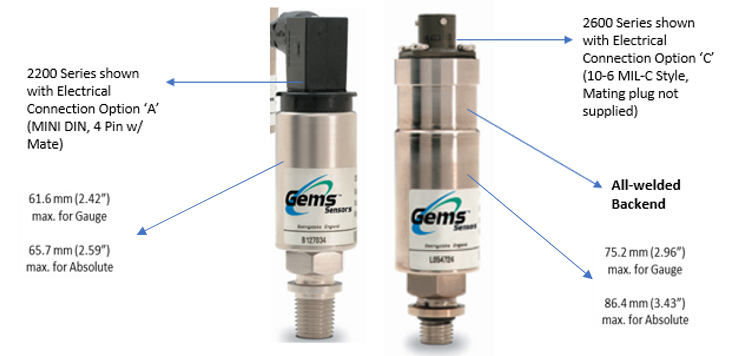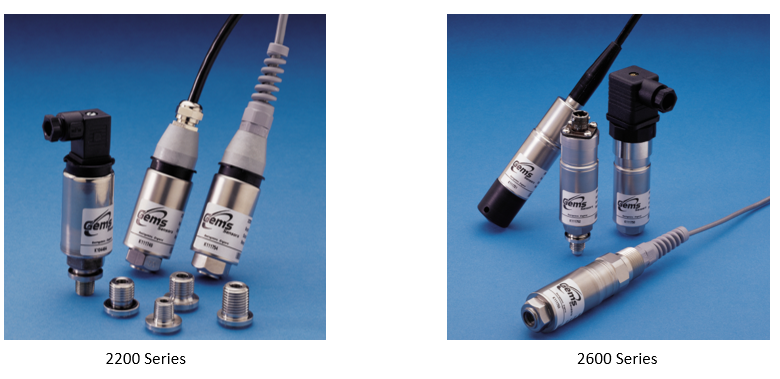We are often asked: “What is the difference between the 2200 and 2600 series pressure sensors?”
Internally, the 2200 and 2600 series share the same electronics and pressure sensing technologies. The main difference between the two series is the physical housings:
- The 2200 is more compact and has a limited electrical connection options
- The 2600 is slightly larger, has an All-Welded Backend and has more robust electrical connection options
To start, there are physical differences:

With the 2200 series pressure sensor, your electrical connection options are:
A - 4 PIN DIN (Micro) Mating Connector Supplied (aka Mini-DIN) (IP65)
B - 4 PIN DIN (Micro) Mating Connector Not Supplied (aka Mini-DIN) (IP65)
2 – Cable, NEMA 4, USA Color Code wiring (IP65)
D – Cable, European Color Code wiring (IP65)
F - Cable Gland, Metal (IP67)
With the 2600 series pressure sensor, your electrical connection options are:
C - Fixed Plug, Size 10-6, Mating Plug Not Supplied, aka MIL-C (IP65)
G - Fixed Plug, DIN 43650, Mating Plug Supplied, aka Large DIN (IP65)
M - Molded Cable, Immersible (IP68)
1 - Fixed Plug, Size 8-4, Mating Plug Not Supplied (IP65)
3 - Conduit Connector, ½” NPT Ext., 1M Cable (IP65)
So, the decision to select a 2200 series pressure sensor versus a 2600 series pressure sensor comes down to which electrical connection is required for your application:
- If you need a simple, quick disconnect option and the application does not require an environment rating of higher than IP65, then choose the 2200 series pressure sensor with the Mini-DIN electrical option (IP65, A or B).
- If you need higher environment protection, then choose the 2200 with the Metal Cable Gland option (IP67, F).
- If you need to submerse your sensor into a tank of fluids, then select the 2600 series pressure sensor with the Immersible option (IP68, M).
 SEARCH OUR RESOURCE CENTER
SEARCH OUR RESOURCE CENTER

